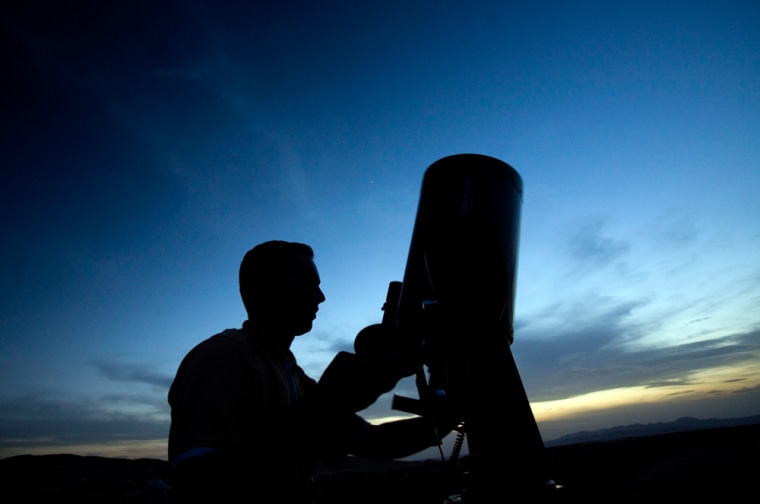This year's astronomical calendar features not just one, but two pairings of the sky's brightest planets — plus a total solar eclipse visible from exotic locations, and a total lunar eclipse that most Americans will be able to see from their backyards.
There's also a good selection of star cluster occultations, and a promising opportunity to catch August's annual Perseid meteor shower.
Here are some of the more noteworthy sky events of the year. Space.com's Night Sky column will provide more extensive coverage of each event as it draws closer.
Feb. 1
Venus-Jupiter conjunction, Part 1: This will be the first of two meetings this year between the two brightest planets in our sky. This one will occur in the morning sky, low in the east-southeast and is best seen about 45 minutes before sunup. On Feb. 4, a beautiful crescent moon will join the two planets, making for an eye-catching array.
Feb. 20-21
Total eclipse of the moon: Less than six months after last August's total lunar eclipse, we have yet another that occurs during the late-night hours of Feb. 20-21. This eclipse will favor much of North America, occurring during convenient evening hours, although Europeans will also be able to enjoy a view of the darkened moon before it sets.
Totality will last for a bit less time than usual (50 minutes), as the moon slides to just within the southern portion of the Earth's umbra, perhaps leading to a potentially bright total phase highlighted by a brighter southern limb. Adding to this spectacle, a planet (Saturn) and a bright star (Regulus) will be close to the totally eclipsed moon, forming a broad triangle.
May 10
Occultation of the Beehive star cluster: A waxing crescent moon, 38 percent illuminated, will pass in front of the famous Beehive Cluster this evening for North Americans, making for a pretty sight in binoculars and low-power telescopes. The stars in the cluster will disappear behind the moon's dark edge and will reappear about an hour later behind the bright edge.
May 21-22
Jupiter without satellites! Anyone who points a small telescope toward the planet Jupiter will nearly always see some or all of the four famous Galilean satellites. Usually at least two or three of these moons are immediately evident; sometimes all four. It is very rare when only one moon is in view and rarer still when no moons at all are visible. On this night, for parts of the northeast U.S. and eastern Canada, Jupiter will appear moonless for about 20 minutes.
June 30
Occultation of the Pleiades star cluster: This occultation will already be in progress as a skinny sliver of a waning crescent moon rises in the pre-dawn skies over the northeastern United States. Earthshine should also be present, imparting a "3-D effect" in binoculars and small telescopes. The best views will come as the brighter stars of this cluster reappear along the dark lunar limb.
Aug. 1
Total eclipse of the sun: Siberia anyone? From Novosibirsk you'll see the late-afternoon sun completely blotted out for 2.3 minutes. Totality will also be visible from Canada's Northwest Passage, western Mongolia and the western end of the Great Wall of China.
{
"type": "Slideshow",
"element": null,
"html": null,
"ecommerceEnabled": false
}Aug. 16
Partial eclipse of the moon: Europe, Africa and Asia will be in the best position to watch up to four-fifths of the moon become immersed in Earth's dark umbral shadow.
Sept. 19
Another Pleiades occultation: A waning gibbous moon will already be within the Pleiades as it rises over the eastern United States and Canada during the mid-evening hours. The reappearance of stars such as Alcyone and Taygeta should be well-seen along the moon's dark limb.
Dec. 1
Venus-Jupiter conjunction, Part 2: This will be the second pairing-off of the two brightest planets in 2008, this time in the evening sky soon after sundown. And as a bonus, the crescent moon will join them, forming a striking triangle and likely making even those who normally don't look up at the sky take notice.
Joe Rao serves as an instructor and guest lecturer at New York's Hayden Planetarium. He writes about astronomy for The New York Times and other publications, and he is also an on-camera meteorologist for News 12 Westchester, New York.
